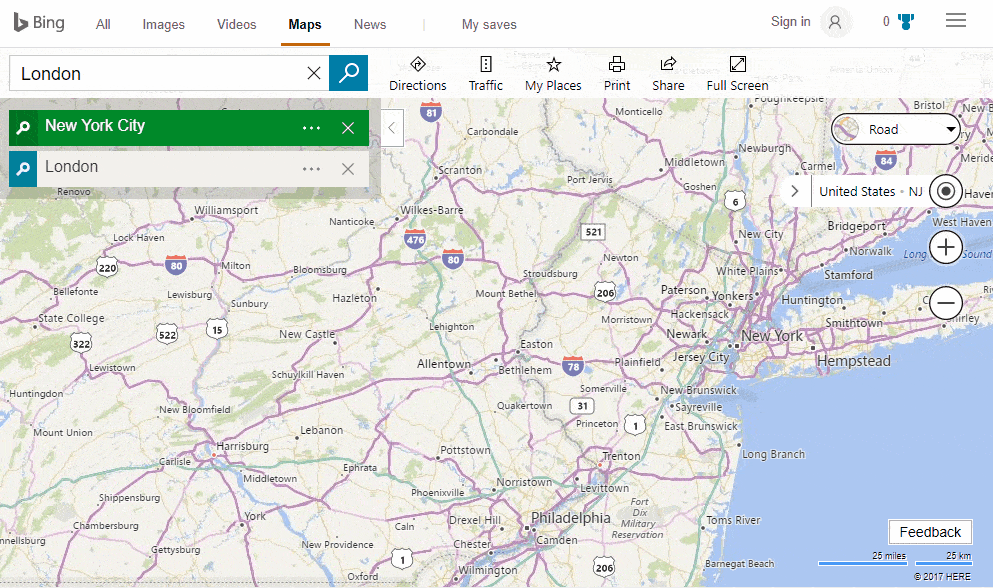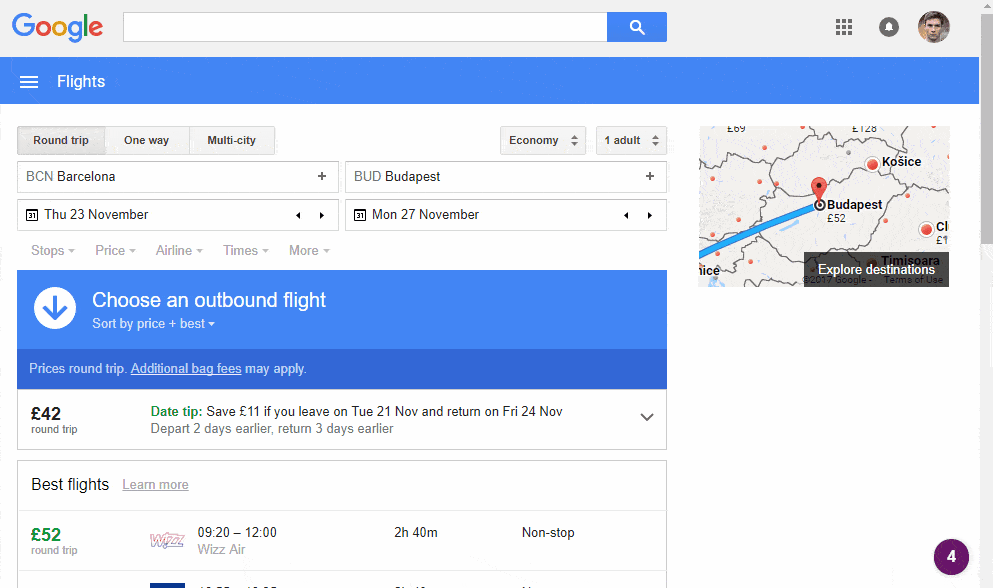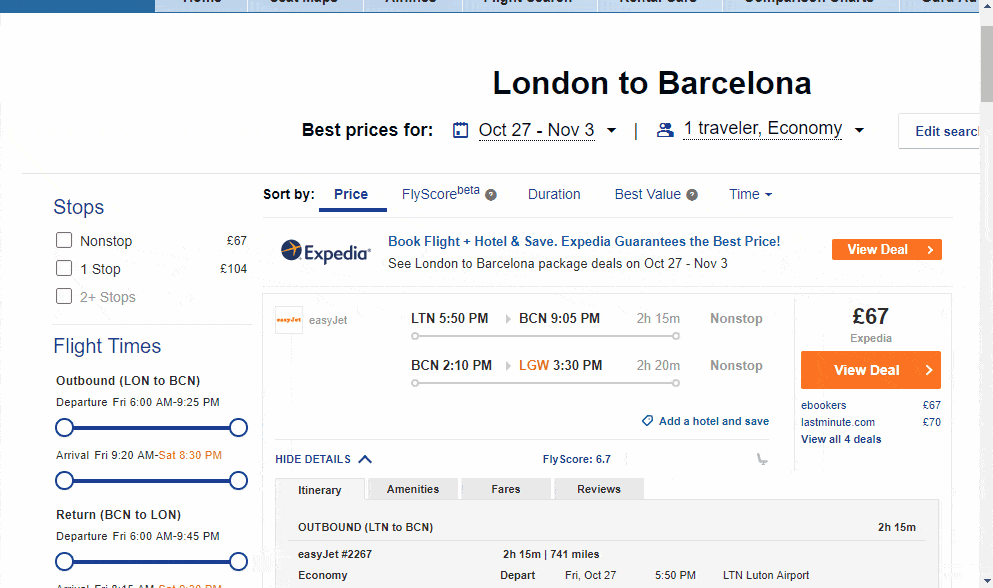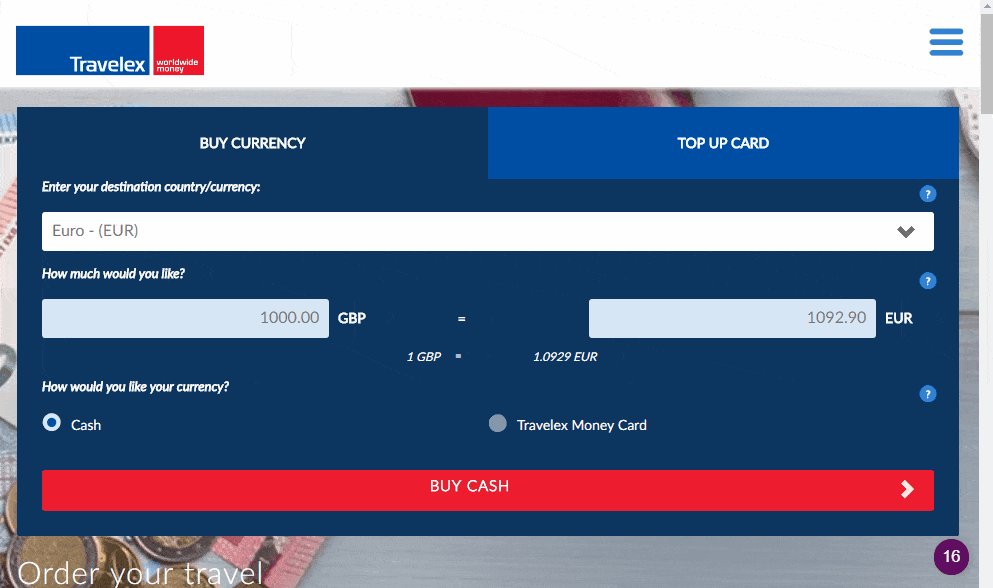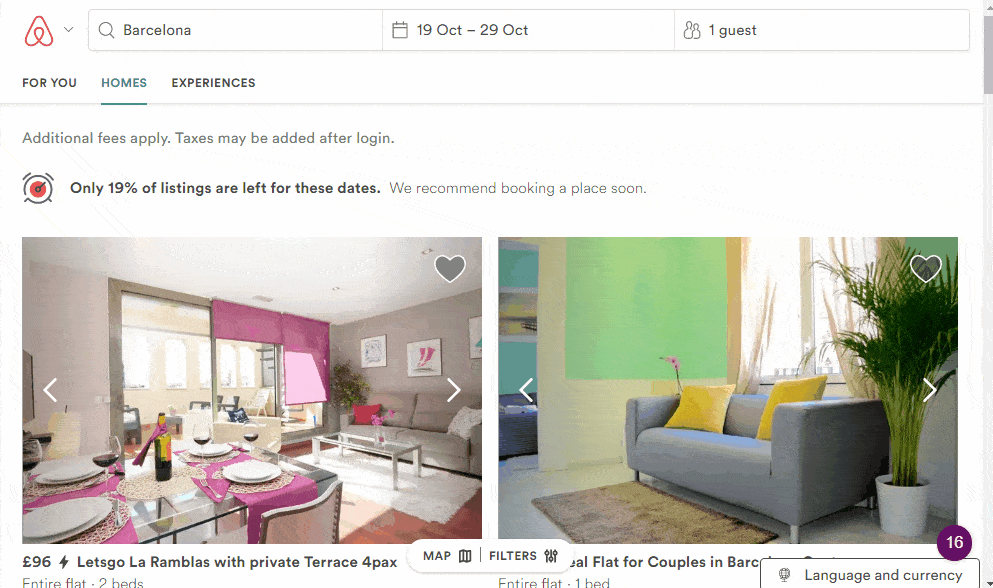Thanks to the internet, planning a vacation is easier than ever. We can access the same information, deals and destination guides that travel agencies use, and we can organize trips more efficiently using apps and websites. Equip yourself with the right tools, and you’ll save money and time when you next book a trip.
Contents
Destination Research
Where do you want to go? The sky is the limit – quite literally. The web has tens of thousands of travel website, packed full of reviews and photos.
Despite travel agents being named a useless job that is no longer necessary, as of 2012 travel agencies still employed over 100,000 people in the US.
Rough Guides and Lonely Planet are highly respected websites with comprehensive destination guides for many countries. Having built their businesses on guidebooks, their websites follow similar formats:
- Lonely Planet focuses on editorial content, and offers useful, practical information about visa requirements and the power supply used. Throughout the site, it promotes published books on relevant topics.
- Rough Guides places more emphasis on photographs, and its destination guides offer a high-level view of things not to miss.
As well as using specialized travel sites, you can also get handy information from social networks. Facebook’s business Pages include a wealth of information, and you’ll often find short reviews and coupons.
Need more ideas? TripSketch takes your trip details and builds a personal travel guide for your phone.
Online Maps
Mapping is another industry that has been transformed by mobile computing. In most populated areas, you’ll be able to access maps on the go, for free. Services like Google Maps and Bing Maps offer up to date data, satellite imagery and driving directions, on the web and on mobile.
Google’s Street View even allows you to complete a virtual tour of your destination before you arrive; Bing’s tabbed panes on the left-hand side allows you to flick between multiple maps.
If you’re outside your own country, there is a cost involved in downloading data over cellular networks, and using maps gets pricey fast. Instead of downloading maps on the fly, consider downloading country maps onto your smartphone before you leave. Nokia’s HERE app is available for Android, iOS and Windows Phone, allow you to design your own map and download it before you go. Basic mapping even works in Airplane mode.
Flight Prices
Once you’ve chosen your destination, you’ll need to get there. For many travelers, flying is the fastest and most convenient solution. The internet offers myriad tools and services that make flight search simple, and you can compare prices instantly to save money on the journey.
Google has its own Flight Search tool with three key features:
- Search for flights to and from a destination
- Find a one-way ticket
- Book a multi-city trip with more than one stop
As you choose your destinations and dates, Google will automatically display route maps, pricing, journey times and more. You can quickly see available cost savings; for example, lower fares on alternative dates.
It’s wise to check more than one provider for the lowest price. Skyscanner, Kayak, Hipmunk, and Expedia all offer instant flight comparisons. And if you want detailed data on the best seats to purchase, search for your flight using SeatGuru.
Foreign Currency
Ten years ago, the traveler’s check reigned supreme, but our use of these checks has fallen. American Express still issues them, but most companies have pulled out of the market, as travelers would purchase them for true emergencies. It’s a good idea to take one or two if you’re truly concerned about security, but you’ll find many destinations are phasing out checks in favor of ATM cards.
If you want a cost-effective alternative to the traveler’s check, consider a prepaid card. These cards carry the MasterCard or Visa brand, but can only be used when credit is pre-loaded and converted to currency. While these cards are more popular in Europe than America, Travelex is one vendor that provides US currency cards.
Hotels
Wherever you go on vacation, you’ll need a place to stay. The internet has blown the hotel industry wide open, and there are all kinds of weird and wonderful options, as well as unbeatable discounts on luxury accommodation if that’s more your style.
For classic hotels, try comparing prices on Trivago, Hotels Combined or Priceline. The latter allows you to set your own price, giving you a little more leverage.
If you’re feeling adventurous, why not cut out the agent and rent a room directly from the owner. FlipKey, Airbnb, and VRBO are just three of the ‘peer to peer’ rental websites now available online. From carriage houses to windmills, Irish castles to Californian RVs, tree houses to railway carriages, renting directly gives you the opportunity to stay somewhere completely unique.
Pulling it Together
Once your trip’s planned out, you’ll need a way to store all of the confirmations, itineraries and boarding cards. You could print hard copies, but your smartphone is a more efficient solution.
Dedicated trip planners automatically scan your email account and compile master itineraries. TripIt compiles all of your data for free, with Pro accounts offering more features for a fee. If you have a Windows Phone, Cortana will scan through your travel plan and provide information about the trip.
On iPhone and iPad, Apple’s Wallet app is a revision of its virtual card organizer, Passbook. Import your boarding cards, loyalty cards, and payment card data for convenient access at the airport or hotel.
Languages
If you have the time to take a language course before your trip, you’ll get much more from the experience. DuoLingo offers easy introductions to commonly spoken languages, while Busuu lets you practice your skills online.
If you don’t have enough time to learn before your vacation, smartphone apps will come to your rescue. Try WordLens for iOS and Android; it uses the camera to translate written material instantly and is ideal for translating medicines, food, and signs in a hurry.
